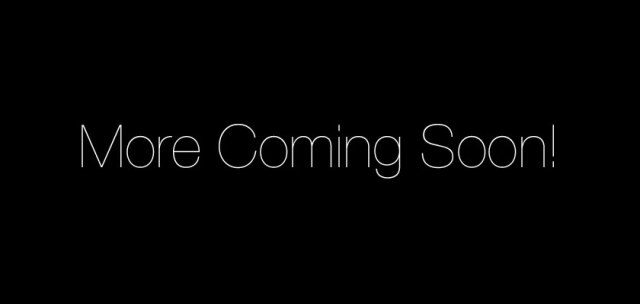
image by Jen Mussari
The Houston Livestock Show & Rodeo has been a staple in Houstonian history far longer than I can remember. Filled with mouth-watering turkey legs, bedazzled clothing and cowboys, it is the essence of what the world thinks Texas is in the purest, most stereotypical form. Whenever I go to the Livestock Show, I usually ignore everything else and go straight for the chocolate toffee (yeah, I’ll risk the cavities, thank you). But this time, well, this time was different.
While I walked around I couldn’t help but notice all of the jewelry and clothing that claimed to be “Texan” yet had obvious Native American influences. Some of these vendors even took it a step further and sported actual company names such as Bing Crosby Indian Art and Tribe America Leathers. At one point, I even walked past a blue jean jacket with a Native American chief wearing a headdress. Before I cried foul, I decided to talk to some of the booth owners to try and clear up some of the questions I had.
The owner of Tribe America Leathers immediately started telling me about each product. He told me that the tapestries and other items were created by different Native American artists. In fact, one of the tapestries I had just picked up had a tag attached with a short bio and picture of a Native American woman. Still dubious, I decided to ask him one more question, one that I knew would either cement or break the validity of his business in my mind. I asked how much of the profits made at the Houston Rodeo would end up going to these tribes. As soon as the question escaped my mouth, I knew I had hit a nerve (or at the very least bumped it). All of a sudden he didn’t seem so keen on helping me anymore. Still moving around his booth, he answered with “almost half” before adding that he gives “them millions and millions of dollars all the time.” Hmm…thank you for your white savior complex.
After this encounter, I decided to check out a few more booths. One that caught my eye in particular displayed posters of what I assumed were white women dressed in Native American garb. Since assuming doesn’t confirm doubts, I went over, pointing at rings that caught my eye and asking what the symbols on them represented, to which the woman stood silently before stuttering her (wrong) answer.
From these encounters, I walked away with several major realizations, all of which illustrate the dangers of cultural appropriation:
1. The Lack of Cultural Context
Though many of these vendors might know how to manufacture these products, they lack the necessary knowledge about the cultural significance of what they are selling. By selling these products with no valuable context in which to understand them, Native American artwork, jewelry and clothing become nothing more than trinkets that make one seem “enlightened” and “cultured.“ Do not be mistaken. Owning all of these “trinkets” clothing and jewelry does not give you genuine insight into diverse, indigenous cultures. Native American culture is not trendy. It is their way of life.
2. The Lack of Native American Representation
Of all the vendors who sold Native American-themed art and clothing, NONE were run by Native Americans. While I do understand that many Native American artists might not have the access or financial standing to open their own stores, serious conversation about the lack of Native American representation in mainstream America is a real problem that is long overdue. Their absence will no doubt lead to the further erasure of Native American peoples. It is, in every sense, the continued cultural eradication of a people that have inhabited this land long before any of us showed up.
3. The Need for Cultural Preservation
Cultural preservation is so important for those that have been and continue to be on the fringes of American society. This society, American society, has done an injustice to Native Americans. I will speak for myself when I say that I know very little about the tribes that reside in this country. The descriptions given to us in history books have unapologetically painted the picture of “savage,” of a people that have been conquered and successfully erased from the American narrative. We owe it not only to these tribes but to ourselves to make sure that Native Americans don’t continue to fall prey to the archetypes given to us by colonialism.
4. The American Double Standard
The double standards in this country never cease to amaze me. I’ve seen a good number of girls posing in photo shoots with headdresses perfectly positioned on their heads, woefully ignorant to the cultural importance of what they represent. These actions are not condemned or even acknowledged by the majority of American society, but let ONE person falsely wear a Purple Heart and it becomes a crime.
5. Economic Exploitation
This seems to be the least talked about consequence of cultural appropriation. When I spoke with the owner of Tribe America Leathers, he explicitly told me that almost 50 percent of the proceeds went to Native American tribes (Navajo to be specific). Yet looking at his website, it says that he makes ALL the clothing himself. I’m honestly not even upset at the fact that he lied to me. I’m more disappointed that he used Native Americans under the guise of inclusion.
6. Buy from Legit Sources
I wholeheartedly believe in cutting out the middle man and buying authentic products from the source. Do your own research. The only thing I own that belongs to Native American culture is a dreamcatcher. I bought it from an authentic small shop on the Galveston Strand when I was around 14. The Cherokee woman who owned the shop explained the intricate process she went through in order to make it. It’s a pretty small dreamcatcher around $17 but I had no qualms about buying it because I knew the quality of the product was worth it.
Again, I want to stress that there’s nothing wrong with buying products that belong to other cultures. As long as you educate yourself throughout the process, you won’t become a perpetrator of cultural appropriation. Remember, products having Native American influence are not synonymous with products made by actual Native American artists.
 Over the past few months, I’ve really enjoyed blogging. Sending my thoughts into the blogosphere for any and everyone to read was a lot fulfilling than I initially thought it would be. I have always been a lover of words, more in love with fiction and the blank verse than structured writing. What I love about this is knowing that write you write can and will make a difference in someone’s life. While your words might not change the world, they can change how someone’s day is going.
Over the past few months, I’ve really enjoyed blogging. Sending my thoughts into the blogosphere for any and everyone to read was a lot fulfilling than I initially thought it would be. I have always been a lover of words, more in love with fiction and the blank verse than structured writing. What I love about this is knowing that write you write can and will make a difference in someone’s life. While your words might not change the world, they can change how someone’s day is going.







